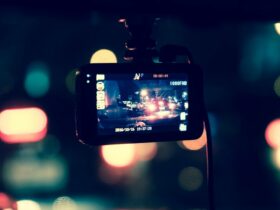When the sun sets and darkness envelops the world, the night can present unique challenges & risks to personal safety & security. Whether you are walking home alone, exploring a new city, or simply going about your nightlife routine, it’s crucial to be prepared & vigilant. Through this blog post, we will delve into tactical techniques & strategies.
These techniques & strategies can help you navigate the night with confidence and reduce the likelihood of encountering dangerous situations. By understanding the environment around you, enhancing personal preparedness, and adopting effective safety measures, you can empower yourself to survive the night and ensure your well-being after dark.

Understanding the Environment
When it comes to staying safe & secure after dark, having a solid understanding of your surroundings is paramount. The night can change the dynamics of an area, making it crucial to assess the neighborhood & location where you will be spending time. The following are some important considerations:
- Assessing the Neighborhood: Take the time to familiarize yourself with the neighborhood’s reputation for safety. Research crime rates & incidents that have happened in the area. Pay attention to any recent trends or patterns that might affect your safety.
- Identifying Potential Hazards: Look for potential hazards or high-risk areas in the vicinity. Dark alleyways, poorly lit streets, or secluded parks may pose a higher risk of encountering criminal activity. Stay away from these areas whenever possible and plan alternative routes that offer better visibility & foot traffic.
- Utilizing Online Resources: Online platforms can provide valuable information about crime data and statistics in specific areas. Websites, apps, and local police department resources can give you insight into the safety levels of different neighborhoods.
By understanding your environment, you can assess the level of risk and plan your activities accordingly. This knowledge empowers you to make smarter choices and take appropriate safety measures to navigate the night more securely.
Personal Preparedness
Being prepared is a key component of staying safe & secure after dark. By taking proactive steps to prepare yourself, you can enhance your ability to respond effectively to potential threats. Here are some crucial aspects of personal preparedness:
- Carrying Essential Items for Self-Defence: Carry self-defense tools that you feel confident & confident using, such as a personal alarm, a small flashlight, and pepper spray. These items can provide a sense of security and act as deterrents in potentially dangerous situations.
- Developing Situational Awareness Skills: Pay attention to people, vehicles, and any unusual behavior or signs of danger. Avoid distractions like excessive phone usage or wearing headphones that might compromise your ability to detect potential threats.
- Communicating Plans & Itineraries: Inform trusted individuals, such as friends & family members, about your plans & itineraries for the night. This guarantees that somebody knows about your whereabouts and can make a proper move if necessary.
In addition, consider enrolling yourself in self-defense classes or workshops to learn practical techniques to protect yourself. These courses can equip you with valuable skills and boost your confidence in handling potentially dangerous situations.

Just remember that personal preparedness is not about living in fear, but rather being proactive and taking steps to mitigate risks. By being prepared, you can increase your chances of staying safe & secure after dark.
Safe Transportation
Choosing the right mode of transportation is crucial for ensuring your safety & security after dark. Now comes to learn about the key considerations of safe transportation:
- Secure Modes of Transportation: Opt for transportation options that are known for their safety features. If possible, use notable & licensed taxi services or rideshare apps that provide driver & vehicle information in advance. Research local public transportation options to determine their safety track record and choose well-regulated services whenever possible.
- Populated & Well-Lit Routes: Choose routes that are well-lit and well-traveled by other people when you walk or bike. You should steer clear of dimly lit areas and shortcuts that could make you more vulnerable to potential threats. Make sure you can be seen and get help if you need it by sticking to main roads and areas with good visibility.
- Traveling in Groups: Before entering a rideshare service, confirm the identity of the driver and the details of the vehicle. Make sure the information provided matches what you see in your app. Share your excursion subtleties with a confidant companion or relative, and consider utilizing the application’s security highlights, for example, sharing your outing status or utilizing a crisis button if accessible.
If you feel uncomfortable or sense something is wrong, don’t hesitate to take immediate action to ensure your safety. Whether it implies deciding on an alternate method of transportation or looking for help from specialists or security faculty, focus on your prosperity regardless of anything else. You can significantly reduce the dangers of traveling at night by taking the necessary precautions and selecting safe modes of transportation.
Wrapping it up
This article explores the unique difficulties and dangers of night navigation. The blog post emphasizes the significance of comprehending the environment, which includes assessing the safety of the neighborhood, identifying potential dangers, and making use of online resources for information on crime. Personal preparedness, such as carrying tools for self-defense, developing situational awareness, and sharing plans with trusted individuals, is also emphasized.
In addition to this, the post highlights safe means of transportation, such as secure modes of transportation, well-lit routes, and group travel to lessen the dangers of nighttime travel. Readers can empower themselves to remain safe and secure after dark by implementing these strategies.



















